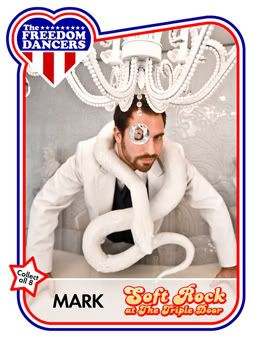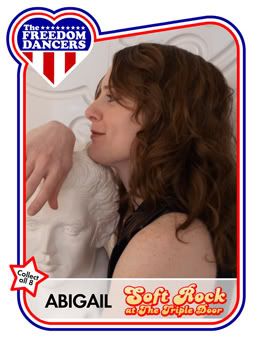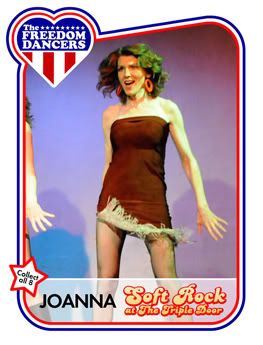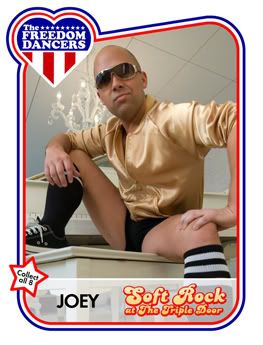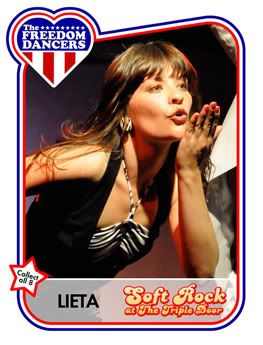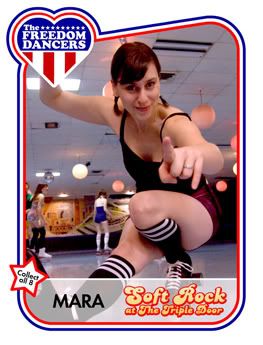The temptation to make jokes about Patrick Swayze's passing is strong. I understand this instinct, his legacy is burned into the minds of generations of moviegoers. I will pass on these silly puns about "corners" and "the wind," because although his association with iconic ironic '80s nostalgia and cheesy one-liners may damn him to good-hearted ridicule, we all know that he was something greater--Swayze was the most talented movie star of our lifetime and a man who forever transformed our culture.
Not since Gene Kelly has one man destroyed a nation with charisma and charm, but also with a gift for song and a unwavering devotion to dance. There aren't many men in the movie star stratosphere who can claim the triple threat title, sure there was always John Travolta, a terrifically multi-talented performer. But forgive me Mr. Travolta, you are no Swayze.
Gene Kelly believed that the only hope for the American Movie Musical was Swayze. Late in his life he passed the baton on to a Swayze in hopes that he could revive the dying American art form. Swayze was never successful in resurrecting the Rodgers-and-Hammerstein-style musical, it was a bygone era that had as much hope in returning to prominence as the Western. Swayze's success in cinema achieved an even higher goal, and what he did for American culture as a whole far surpasses what Gene Kelly had intended. He handed us a gift so great, that it lives on today and for decades to come.
Swayze made it cool to dance again.
Sure people were still bopping and grinding around dance floors. But I'm talking about dancing . Grab your partner, spin her around, lift her up, hold her close and don't you dare let her go, especially if she's above your head eight feet in the air. Swayze brought back an art that had nearly vanished and introduced a whole generation to couples dancing.
He did it by achieving what had seemed impossible in a culture of naysayers--he made dancing look masculine. The art of dance for men had lost its luster, men were chided for dancing for being "girly" or "gay." Women and gay men have always been comfortable with learning to dance, but straight men couldn't seem to come to terms with it. Somehow Swayze could pull off a step-ball-change-high-kick-back-step-triple-pirouette and still look like he was about to kick your ass after brushing the beautiful hair from his face.
 Siano displays his Swazye-inspired moves with fellow dancer Laura DiMarco (photo by Victoria VanBruinisse)
Siano displays his Swazye-inspired moves with fellow dancer Laura DiMarco (photo by Victoria VanBruinisse)
Without Swayze you wouldn't see the massive return of ballroom dancing that we enjoy today. And male performers aren't afraid to show off some serious dance moves from fear of being labeled a ninny. Justin Timberlake is a rock-star-sex-god when he dances , Hugh Jackman's dance moves are turning him into a modern day Casanova, and huge droves of young men are packing dance halls and classrooms all in an attempt to prove they are strong, stylish, and masculine.
Now, every girl likes a boy who can dance. Especially if he looks like he might be a bit of a bad-ass underneath with a heart of gold. Dancing is cool again, everyone! Now pay homage to the man who made it possible. Thank you Swayze, the world is a better place having known you. I'm off to work on my triple pirouette.
Mark Siano performs his new comedy cabaret "Back to the Soft Rock" October 9 and 10 at The Triple Door (info/tix). Should you wish to see Swayze's on-screen magic, Central Cinema is presenting Dirty Dancing (though tonight) and Roadhouse (through Thursday). Here's their schedule.




